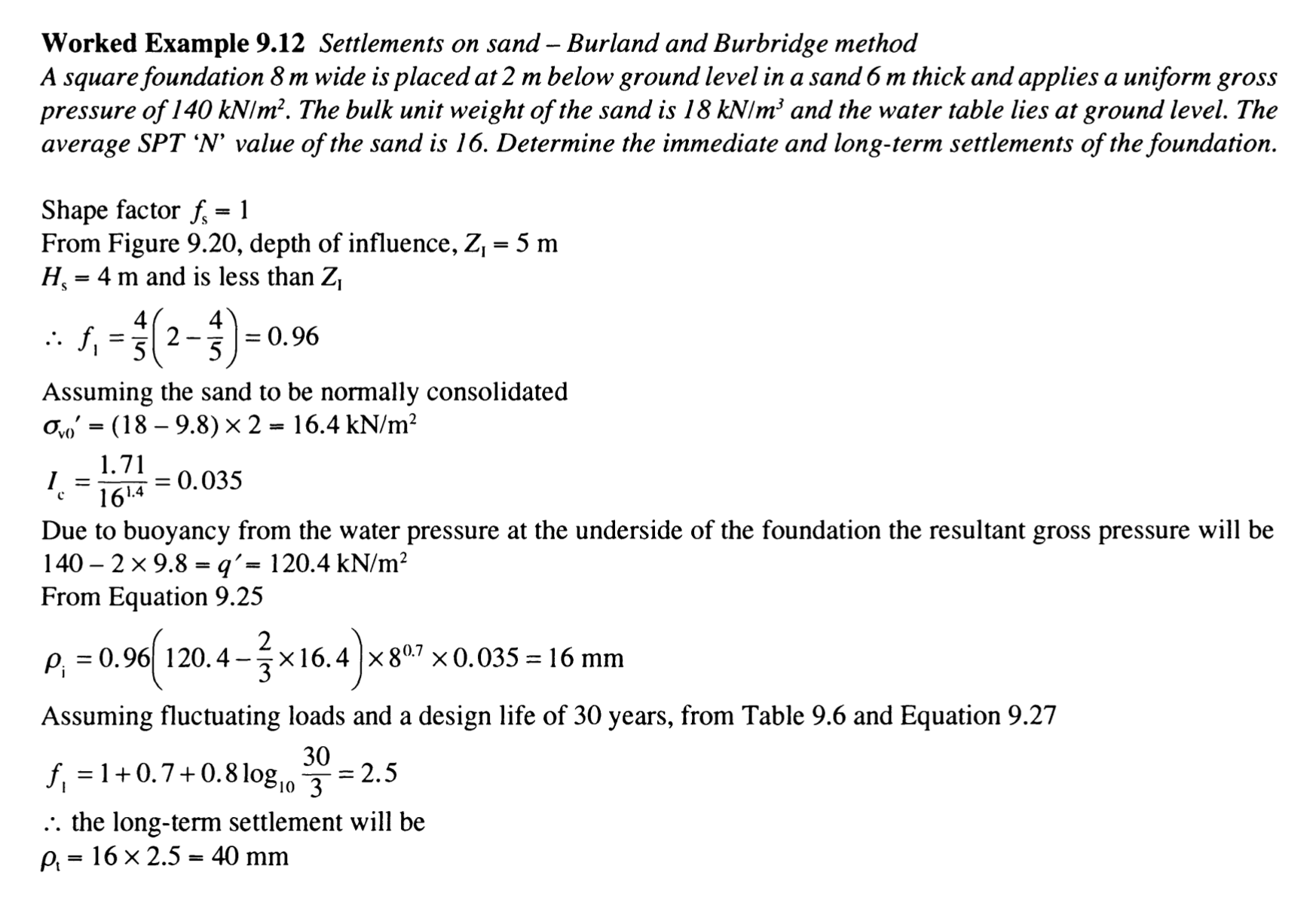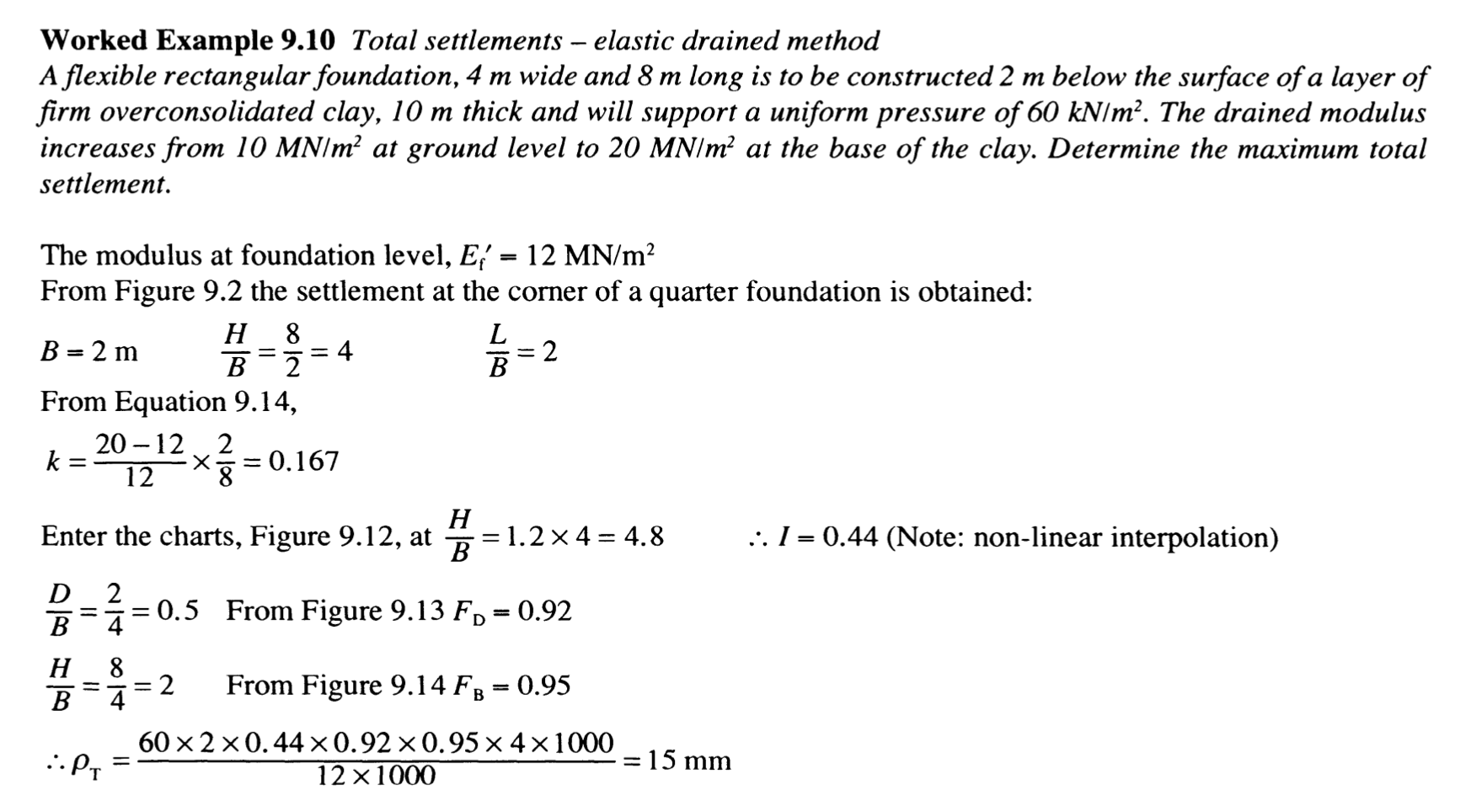Free Building Foundation Settlement Calculator
Check ground settlement of a building foundation or shallow footing.
Foundation settlement theory
How do I calculate ground settlement beneath a foundation?
Ground settlement is a natural phenomenon when a force is applied to a building foundation. If the ground beneath the foundation is not solid rock often as the force is distributed throughout the soil it will cause movement. This settlement can be quantified using either closed-form or Finite Element approaches. Closed-form or empirical calculation of foundation settlements are based upon correlations between applied forces, foundation shape properties and the parametes of the underlying ground. This analysis approach can be split between drained e.g sand, gravel and undrained e.g. clay and silt.
Settlement calculations are considered as a serviceability case and therefore unfactored loads are used to calculate the settlement directly.
What is the difference between immediate settlement, consolidation settlement and total settlement?
Settlement occurs at various distinct stages, particularly for undrained soils. When a force is immediately applied to a foundation immediate settlement occurs, this is where settlement occurs without drainage. Immediate settlement typically occurs during the construction stage.
Consolidation settlement takes longer to develop and occurs as water drains from the pores in the soil. This can lead to the gradual development of settlements with time, leading to potential cracking and structural damage if the settlements are excessive.
Total settlement is the combination of immediate settlement, consolidation and any secondary compression which may occur.
How do I calculate foundation settlement in undrained analysis?
Various methods exist for calculation of foundation settlement including the Ueshita and Meyerhof method for immediate settlement, which is the method used to calculate immediate settlement in this calculator. This method allows for the principle of layering, whereby the settlements of each layer can be superimposed.
Total settlement for undrained analysis can be estimates using the Skempton-Bjerrum method or Meigh method. This calculator uses the Meigh method to estimate total settlement, this method assumes linear elastic behaviour of the soil, which may not always be the case. Many overconsolidated clays behave in this way.
How do I calculate foundation settlement in drained analysis?
A large number of methods for estimating foundation settlements on granular materials like sands. However due to large range of variables no one method is capable of accurately predicting settlements perfectly in all cases. The method adopted in this calculator is the Burland and Burbridge method which correlates the average SPT count for the soil layer, along with geometry factors and applied loading to the overall settlement. For total settlement, the time dependency factor is applied considering the service life of the foundation along with the load type.


What's this calculator used for?
This free calculator helps Geotechnical Engineers calculate the ground settlement of a building foundation. Calculate the immediate and total settlement resulting from an applied serviceability on the footing. The calculation considers both drained and undrained cases uses the Burland and Burbidge's method, Meyerhof Method and Meigh method. Check geotechnical design ground subsidence risk and calculate building damage assessment.
Automatically check your designs against building codes
Discover how you can use algorithmic checking on your construction project documents.
Get access to our full software suite including our 7 module online AI in Construction Certification.
